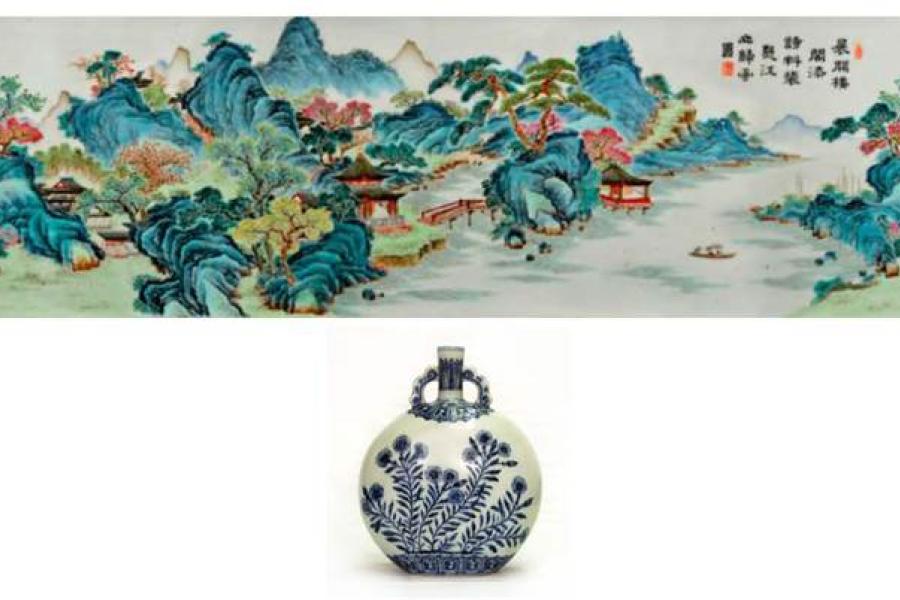LONDON, 18 October 2016 – This winter, to coincide with Asian Art in London, the Oriental Ceramic Society will hold an exhibition of rare Asian ceramics at Sotheby’s. Some 200 examples of ceramics, mostly from China and Japan, and all drawn from members’ collections, span the complete range from Neolithic to contemporary pieces. Curated by Regina Krahl, a leading authority on Chinese ceramics and former president of the Oriental Ceramic Society, the exhibition is the most important of its kind to be staged by the society since its 50th Anniversary Exhibition in 1971. ‘China without Dragons’ showcases the vast variety of wares and the inventiveness of Asian potters well beyond the classic confines of Chinese art. With the dragon so firmly identified with China to almost have become a cliché, the astonishing versatility of the exhibits privileges unusual and rarely seen artefacts. The exhibition, on view at Sotheby’s in London from 3 to 9 November 2016, is sponsored by J Safra Sarasin Brokerage Ltd – Insurance Brokers. Visitors will also have the opportunity to preview Sotheby’s biannual London series of Chinese works of art sales.Regina Krahl, Curator of ‘China without Dragons’, and former President of the Oriental Ceramic Society, said: “This exhibition aims to celebrate the rich store of Chinese ceramics collected within the Oriental Ceramic Society. The fascination of an exhibition such as this lies in its phenomenal spectrum. It covers the full range from the rarest masterpieces that we might see in a major museum show to minor items that would otherwise rarely be exhibited but which display some unusual or noteworthy aspect, are particularly well made, or are simply beautiful. It is hoped that this selection will be enjoyed by specialists as well as by amateurs.”
Jessica Harrison-Hall, President of the Oriental Ceramic Society, said: “Chinese ceramics have captivated collectors for a thousand years. They can arouse great passion. Chinese texts describe a jealous emperor smashing a beautiful bowl which he found unexpectedly in his lover’s room. While in Europe, a whole dragoon of soldiers was exchanged for a porcelain vase. These legends add to the mystique of collecting. The Oriental Ceramic Society, formed in 1921 to share knowledge and enjoyment of ceramics, has made the great collections at the British Museum and V&A in London what they are today.”
The Oriental Ceramic Society remains the leading international society for the study and appreciation of Asian art. From modest beginnings, it was founded in 1921 by a group of friends united in their passion for Chinese ceramics, who met at each other’s homes every month to compare pieces in their collections and to share their research. During its first decade, the growth in the number of members was marginal – from 12 to 20 – a conscious decision which allowed for meetings to continue in members’ drawing rooms. However, the Society’s mission soon expanded well beyond the field of ceramics to Asian art in general once membership was opened up to a wider public in 1933. Today, a membership of more than 700 from around the world demonstrates the continued relevance of the society, which has played a significant role in shaping our understanding of Asian ceramics – through dozens of exhibitions over the years, the accompanying catalogues have become reference works for academics and collectors.
 Asian Art in London - Mit freundlicher Genehmigung von: sothebys.com
Asian Art in London - Mit freundlicher Genehmigung von: sothebys.com Asian Art in London - Mit freundlicher Genehmigung von: sothebys.com
Asian Art in London - Mit freundlicher Genehmigung von: sothebys.com